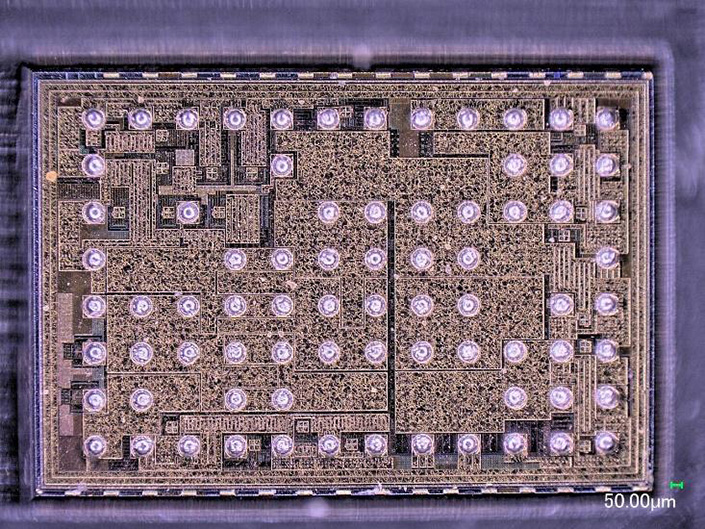2024-02-20 カリフォルニア大学サンディエゴ校(UCSD)

Die photograph of the proposed piezoelectric converter, credit: UC San Diego
<関連情報>
- https://today.ucsd.edu/story/these-tiny-power-converters-run-on-vibrational-energy
- https://ieeexplore.ieee.org/document/10454471
圧電共振器を用いた20~2.2VのDC-DCコンバータで310%の損失低減を達成 An Integrated Dual-side Series/Parallel Piezoelectric Resonator-based 20-to-2.2V DC-DC Converter Achieving a 310% Loss Reduction
Wen-Chin Brian Liu; Gaël Pillonnet; Patrick P. Mercier
2024 IEEE International Solid-State Circuits Conference Date of Conference: 18-22 February 2024
DOI:https://doi.org/10.1109/ISSCC49657.2024.10454471
Abstract
Piezoelectric resonators (PRs) have recently emerged as an attractive substitute for inductors to process energy in DC-DC converters, due to their low-volume planar formfactors, superior volume/frequency scaling capabilities, very high Q, ability to be batch fabricated at low cost, and integration potential directly into Si (Fig. 8.6.1 top left) [1–3]. The baseline PR converter described in the literature [1] (Fig. 8.6.1, top right), achieves high efficiency by operating the PR in the inductive region and enabling zero-voltage switching (ZVS) and soft-charging of the PR’s junction capacitor, Cp. However, as shown in Fig. 8.6.1 (bottom left), the PR’s utilization factor, K, is maximal at a voltage conversion ratio (VCR) of 0.5, and falls off rapidly at lower VCRs [1]. At the lower VCRs demanded by many modern DC-DC applications (e.g., VCR<0.1), the PR mostly circulates current within itself, leading to a high peak resonant current, IL,PR(pk), high PR vibration losses, and poor efficiency. Recent art has suggested adopting a hybrid switched-capacitor (SC) / PR-based structure, where the SC network provides part of the voltage conversion to allow for the PR to operate with a higher K and to distribute the voltage drop across low-voltage transistors [4, 5]. However, such prior art only includes a single flying capacitor, which limits the optimal conversion ratio to only 0.25 to 0.33. Importantly, no IC-based PR converter has been demonstrated in the literature to date, and no work has reported operation at low voltage outputs with a high step-down ratio (e.g., Vip>10V, V0<2V).



